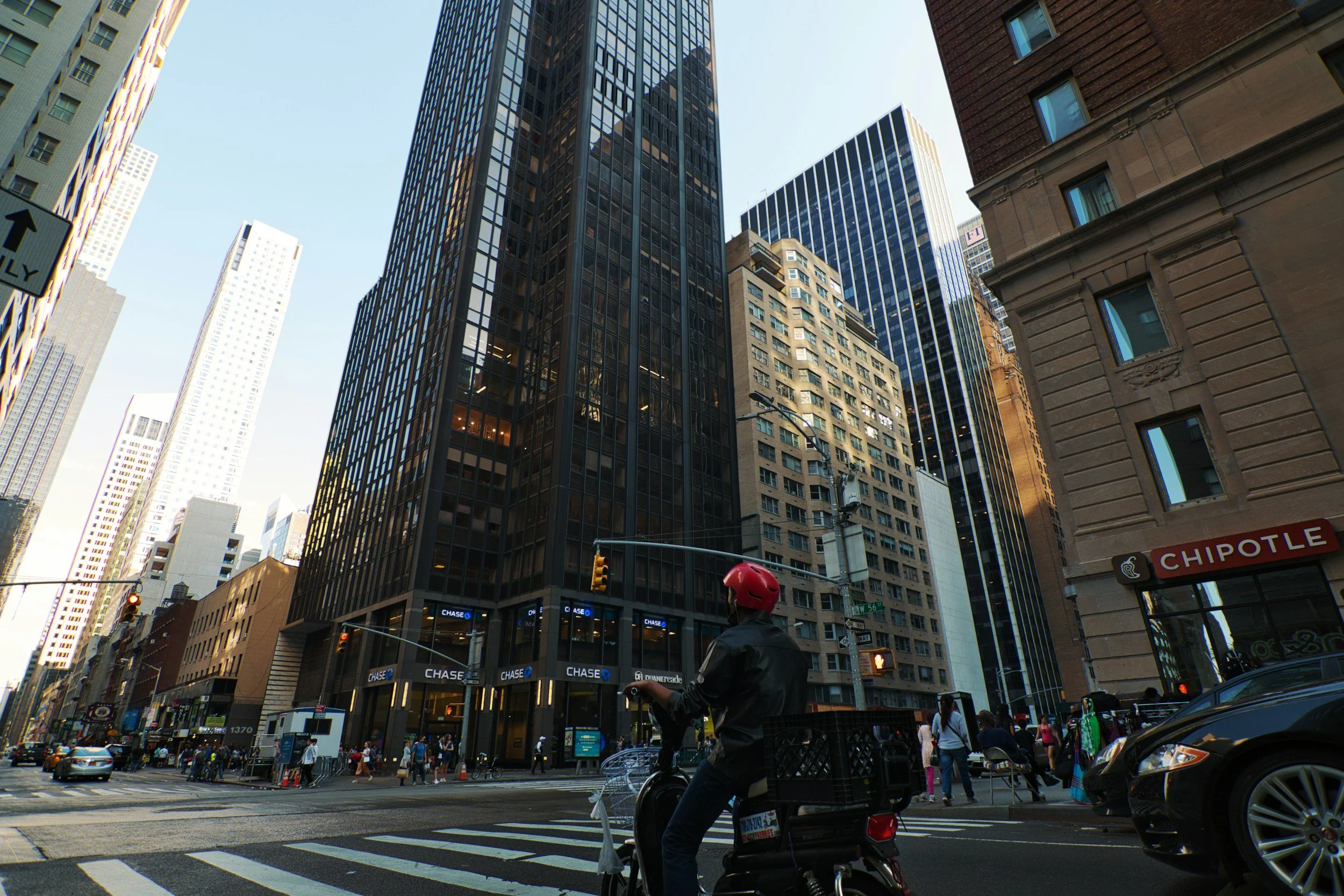Food Delivery Frenzy: Personal Injury Risks and Legal Protections for NYC Delivery Workers
By PAGE Editor
The food delivery industry in New York City has experienced explosive growth, paralleling the heightened demand for quick and convenient meals. This rapid expansion presents significant challenges and risks, particularly for the delivery workers who tirelessly navigate the bustling streets. New protections have been introduced to ensure these workers receive fair pay and access to essential facilities.
While these legal protections are crucial, delivery workers still face considerable personal injury risks. Navigating heavy traffic, adverse weather conditions, and carrying heavy loads often result in accidents and injuries. To address these hazards, New York personal injury lawyers offer support and representation for injured workers across the state, ensuring they receive proper compensation and care.
Recognizing the complexity of their roles, lawmakers have implemented several measures to safeguard delivery workers' rights. New regulations now mandate minimum pay for time spent on deliveries and require apps to adhere to stricter safety and health standards. This evolving landscape reflects an ongoing commitment to addressing the balance between rapid delivery services and the well-being of those who make such services possible.
Navigating the Landscape: Worker Status and Rights
Navigating the complex world of worker classification and protections in New York City's gig economy can be challenging. Key issues include understanding the legal status of food delivery workers and the various challenges they face, from unsafe working conditions to efforts for greater rights and protections. If you or someone you know is involved in an incident while delivering food, consulting a food delivery accident lawyer can help protect your rights and navigate potential legal complexities.
Understanding Worker Classification and Protection Laws
Worker classification plays a crucial role in determining the rights and protections available to food delivery workers. In many places, including New York City, delivery gig workers are classified as independent contractors rather than employees.
This classification means delivery workers often lack benefits like minimum wage guarantees, health insurance, and paid leave.
Recent efforts have sought to change this. For example, Spain has implemented laws to offer better protections to gig workers, recognizing them as employees rather than independent contractors. Such changes are critical to ensuring gig workers have basic social rights and protections.
In New York City, there have been legislative efforts to secure minimum pay and safe working conditions for food delivery workers. These laws aim to protect workers from exploitation and provide them with a more secure employment status.
Challenges Faced by Food Delivery Workers in NYC
Food delivery workers in New York City face numerous challenges, including unsafe working conditions and economic exploitation. They often fund their own expenses, such as e-bike maintenance, batteries, and protective gear, which adds financial strain on already low-paid workers.
Many workers have reported nonpayment or underpayment, further exacerbating their financial instability. They also face violence and unsafe conditions on the job, with little to no recourse available to them.
Additionally, the lack of legal protections leaves many workers vulnerable, particularly during events like the COVID-19 pandemic. During this period, delivery workers were essential yet faced increased risks without adequate protection or pay.
Los Deliveristas Unidos: Organizing for Change
Los Deliveristas Unidos, a worker-led group, plays a significant role in advocating for food delivery workers' rights in New York City. Part of the Workers Justice Project, this group has been pivotal in pushing for better conditions and legal protections.
Their activism has led to legislative wins, including new laws aimed at securing minimum pay and the right to use restaurant restrooms. They also advocate for safer working conditions and greater recognition of delivery workers' contributions.
The organization's efforts underscore the importance of collective action in addressing the exploitation and safety issues faced by gig economy workers, particularly immigrants and those most vulnerable.
Operational Realities and Compensation Structures
Food delivery workers in New York City face varying pay rates and operational challenges influenced by the gig economy. These challenges involve dependence on tips, fluctuating platform fees, and minimal safety nets provided by third-party apps.
The Economics of Food Delivery: Pay Rates and Tips
Food delivery workers in NYC typically earn around $14.18 per hour with tips and $7.09 per hour without tips. Factoring in expenses such as bike maintenance and data plans, the take-home pay decreases to $11.12 per hour with tips and $4.03 per hour without tips. These workers thus rely heavily on tips to make a livable wage.
Minimum payments are essential, as they stabilize otherwise unpredictable earnings. Despite promises by platforms like Grubhub, DoorDash, and Uber Eats to improve pay structures, drivers often experience low pay and inconsistent tip amounts. High fees deducted by these companies also impact overall income.
Platform Paradigms: Third-Party Apps and Their Impact
Food delivery apps significantly influence drivers' operational realities. These platforms not only dictate routes and fees but also impact minimum per-trip payments and overall pay rates. The dependency on these third-party apps has transformed delivery work into high-intensity, low-security employment.
The Department of Consumer and Worker Protection has set regulations, but challenges persist. Delivery workers are primarily independent contractors, which excludes them from many employee protections. Platforms like Grubhub, DoorDash, and Uber Eats leverage this status to minimize costs, sometimes at the workers' expense.
Operational costs such as electric bikes, batteries, and data plans are borne by the delivery workers. These out-of-pocket expenses further erode net earnings, highlighting the crucial role of tipping in achieving a sustainable income.
HOW DO YOU FEEL ABOUT FASHION?
COMMENT OR TAKE OUR PAGE READER SURVEY
Featured









Topicals makes its first-ever collaboration debut with Billionaire Boys Club, reimagining its cult-favorite, Sephora No. 1 Faded Under Eye Masks in a limited-edition space-blue design that merges streetwear culture, community, and clinically backed skincare.